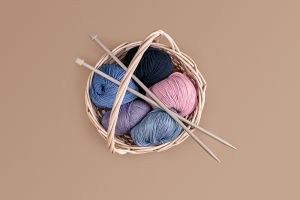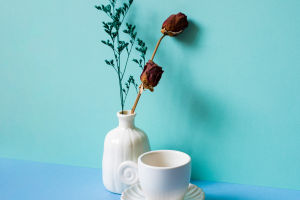Flower arranging is an art form that can add elegance and vitality to indoor spaces.
With the skillful combination and design of flowers, you can create various styles of floral arrangements, making your home feel more warm and lively.
The following are six tips to help you craft beautiful floral displays.
1. Consider Color Harmony
The choice of flower types and colors is the first step in floral design. It’s essential to consider how the colors of the flowers will coordinate with the overall environment.
For example, if your room has a neutral color scheme, you can opt for soft tones such as pale pink, beige, or white flowers to create a warm and gentle atmosphere. On the other hand, in spaces with vibrant colors or a modern feel, using contrasting or bold flowers like orange, yellow, or purple can add visual impact.
2. Create Depth and Dimension
The height and arrangement of flowers play a critical role in determining the dimensionality of the display. A successful floral arrangement does not have all the flowers at the same level but instead uses varying heights to create movement and depth.
For instance, larger flowers can be placed in the center or toward the back, while smaller flowers and leaves can be arranged around them, creating a multi-layered look.
3. Choose the Right Container
The vase or container you use is just as important as the flowers themselves.
A well-chosen vase can enhance the overall display. The shape, material, and size of the container should complement both the flowers and the interior setting. For example, tall glass vases are suitable for displaying long-stemmed flowers like lilies or tulips, while smaller ceramic vases are better suited for more compact bouquets.
The color and texture of the container are also key factors to consider. If the arrangement is for a formal occasion or a special setting, choosing a vase with a smooth texture and deep color might be more appropriate. For everyday home decor, you can choose simple, natural-feeling vases, such as those made from wood or wicker, which provide a more earthy and organic aesthetic.
4. Incorporate Greenery
Floral arranging isn’t just about the flowers—foliage and greenery play a crucial role as well. Green plants can fill space, add depth, and enhance the overall color contrast.
When arranging flowers, adding some greenery, such as ferns, ivy, or eucalyptus leaves, can not only make the display fuller but also create a harmonious visual transition between the flowers. This helps balance the arrangement and makes it more cohesive.
5. Mind Proportion and Balance
The proportion between flowers, foliage, and containers plays a significant role in the visual harmony of the arrangement. You’ll want to ensure that the size of the flowers isn’t too overwhelming or too small for the container.
Additionally, balancing the arrangement by spreading out flowers and leaves evenly across the composition prevents it from looking too crowded or too sparse. The natural flow and symmetry of the design are key to creating an aesthetically pleasing arrangement.
6. Embrace Seasonal Themes
Floral arrangements can also reflect the changing seasons. For instance, in the spring, you might choose bright, short-lived seasonal flowers like tulips or cherry blossoms to create a fresh, vibrant atmosphere.
In the fall and winter, however, opting for deeper-colored and more textured flowers, such as chrysanthemums, along with other seasonal decor elements, can evoke a cozy, festive mood. Adding touches of gold or red during these times can also enhance the holiday spirit.
In conclusion, flower arranging is not merely about combining flowers; it is a creative art form. By selecting the right flowers and containers, pairing them with suitable greenery and decorative elements, and embracing seasonal and occasion-based themes, you can create stunning and personalized floral arrangements that bring out the unique charm of any setting.


